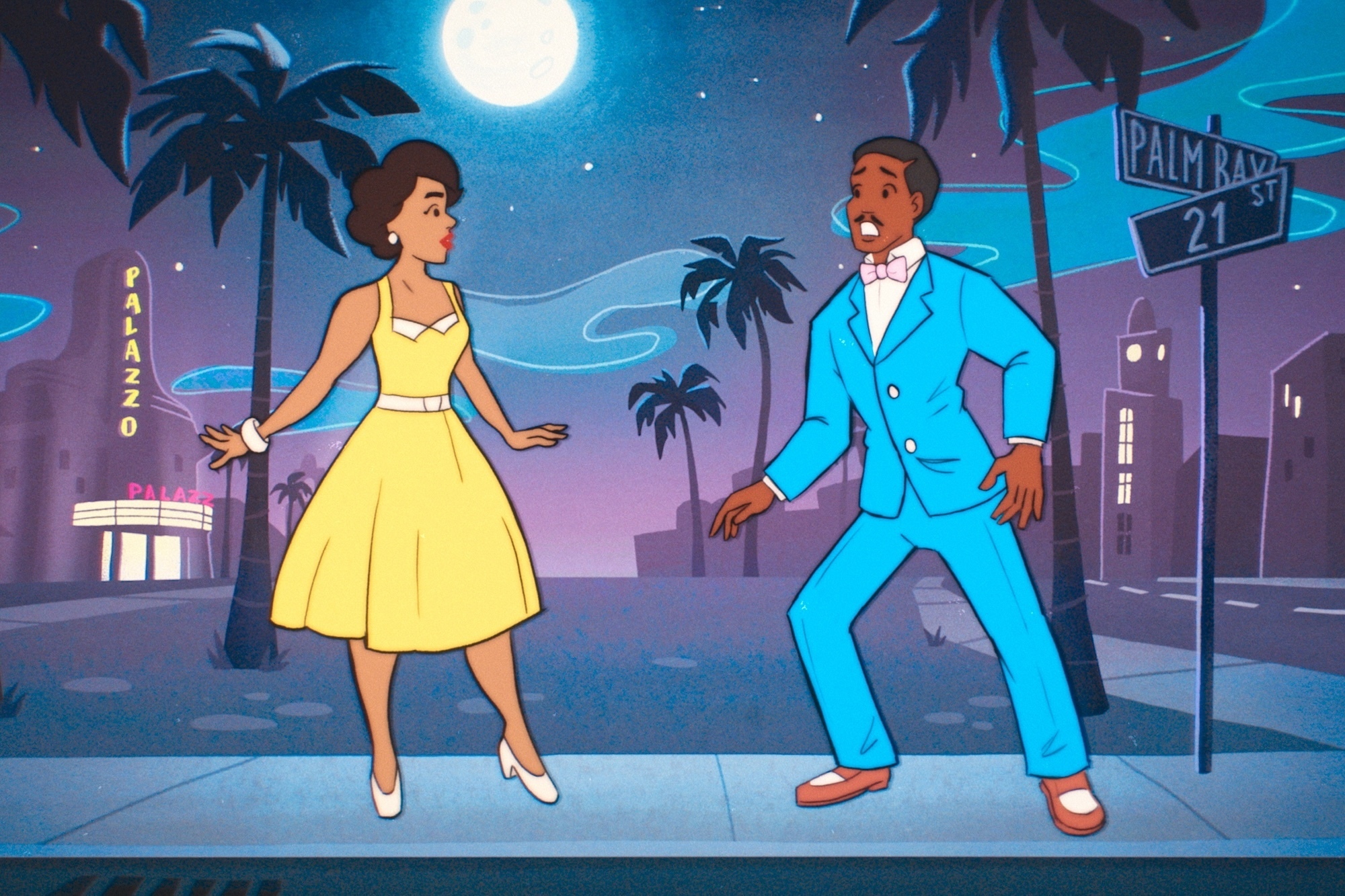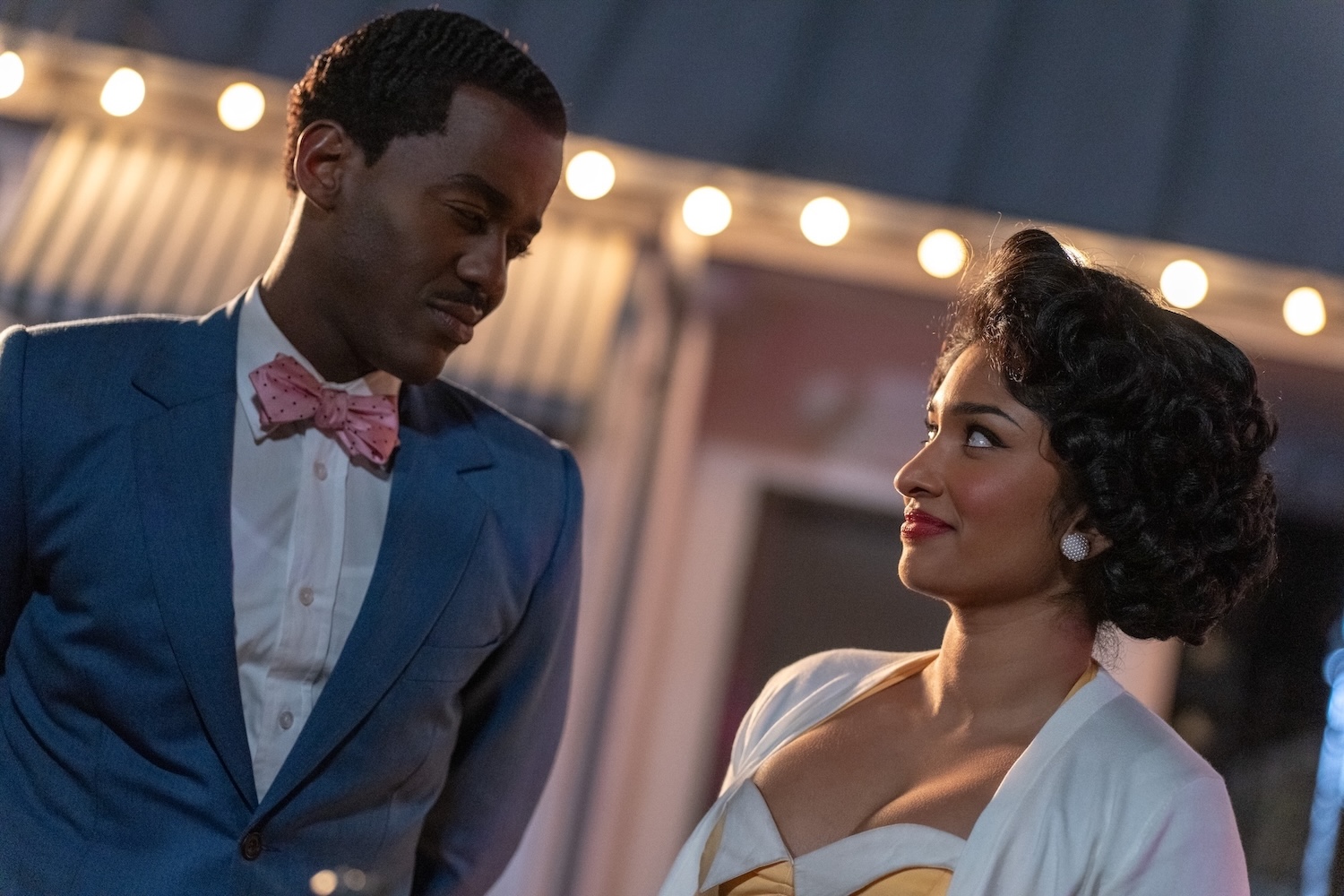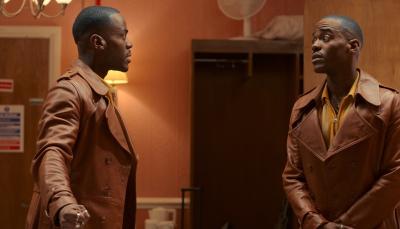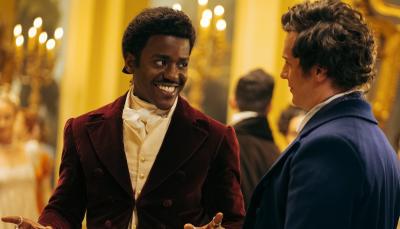'Doctor Who' Gets Animated in Love Letter Episode "Lux"

Ncuti Gatwa, Varada Seth and Mr. Ring-a-Ding in "Doctor Who"
(Photo: BBC Studios/Bad Wolf)
The introduction of any new companion to the world of Doctor Who tends to follow a few predictable patterns: The Doctor usually meets a new traveling partner on Earth, introducing them to the existence of things like aliens and the concept of time travel in a familiar environment before whisking them off on their initial adventures, which are almost always a trip to the future and a trip to the past.
Thanks to the season premiere, "The Robot Revolution," which saw the Doctor follow Varada Sethu's Belinda into space, she has already experienced the weirdness that comes with discovering other worlds and their cultures (and even has a planet named after her to show for it). It makes sense, then, that the season's second outing, "Lux," sees the pair journey into the past on their first proper adventure.
It's a bit of an unwilling trip for Belinda, who wants nothing more than to go home to the planet she's left behind. But since something is preventing the TARDIS from returning to Earth on the day she left it (May 25, 2025), the Doctor has to think outside of the box to honor her request. He builds a McGuffin-like device he calls the Vindicator (a Vortex Indicator), which is meant to triangulate a way back to Earth, but only after they land in a few places to calibrate it. (Convenient, isn't it?)
Their first stop: Miami, 1952. What follows is an hour that allows Belinda to see some of the joys and horrors inherent in time travel. "Lux" deftly blends the standard "getting to know you" info dumps that allow the Doctor and Belinda to bond (his home plant is gone! her mom's a violinist!) with an animated enemy, an intriguing existing connection to the stories we saw last season, and a strangely emotional meta in-joke that may be the only thing anyone talks about after this episode.
"Lux" is a somewhat more substantial introduction to Fifteen and Belinda's partnership than the premiere, which (correctly) spent most of its time introducing us to Belinda on her own terms. Here, Ncuti Gatwa and Sethu's chemistry shines throughout, whether Fifteen is quietly breaking down the truth of life in segregated 1950s America or they're trying to break their way out of a seemingly endless film strip.
Much of this episode has been featured in the Season 2 trailers, so viewers have likely gotten a glimpse of many of the hour's most significant moments, from animated villain Mr. Ring-a-Ding crawling through a theater screen into the real world, much like Samara from The Ring, to Belinda and the Doctor becoming animated themselves. But the overall execution of the story is top-notch and full of the sort of unexpected bits of emotion that showrunner Russell T. Davies has always excelled at.
Fans have already suspected this creepy singing cartoon has ties to the world of the Toymaker and the rest of the gods from Pantheon that the series established last year. While Lux Imperator, God of Light, may be hand-drawn, he's certainly no less frightening than his since-vanquished brethren, with the ability to trap victims in celluloid or within fictional movie-style worlds of his own creation. The Traitors host Alan Cumming is clearly having a blast voicing Mr. Ring-a-Ding, who is annoyed by the rules constraining his existence (and, to be fair, having to sing that dumb song on repeat would probably make anyone want to conquer the universe).
As animated versions of themselves trapped in the world of Mr. Ring-a-Ding's film, the Doctor and Belinda must access their emotions to save themselves, a genuinely funny gag that sees their 2-D bodies become more rounded and three-dimensional as they acquire depth by confessing their fears about their current situation. For Belinda's part, she finds the Doctor's life terrifying and doesn't think he'll ever manage to get her home the way he's promised. Fifteen is afraid that the reason he can't get Belinda home is that something terrible has happened to Earth in 2025.
(This seems obvious, given the space wreckage we saw floating about last week, but good on you for sharing those emotions, Doctor.)
As the pair struggles to free themselves, they try several methods of manipulating the film they're trapped in, eventually stepping through the fourth wall in the same way that Mr. Ring-a-Ding himself did. They find themselves in a world that strikingly resembles our own— right down to the thrilled fans sporting Tom Baker scarves, Matt Smith fezzes and T-shirts adorned with Cybermen and the Meep.
The sequence that follows, which is both a meta send-up and a love letter to modern-day Doctor Who fandom, is probably what the kids today might call "cringe." It features references to production leaks and online arguments about the show's quality, including a debate about what the best episode of the show is (everyone insists it's "Blink," although David Tennant's name is pointedly not mentioned).
The Doctor actually takes the prospect of being a fictional construct in stride (save for the fact that none of his adventures are mentioned among the series' best). It's adorable, and strangely like how I'd prefer to imagine this would all go, if the Doctor happened to clamber out of any of our television sets during a broadcast. But what's particularly lovely is the way the Doctor Who fans are presented. It feels as though this moment is inserted to mock those who love the show best, but it isn't.
Instead, it's the fans who save the day, both by having sussed out the ending so that Fifteen and Belinda know what to do during their final face-off with Mr. Ring-a-Ding and by sacrificing themselves to get our heroes out of the villain's trap. They've learned, you see. Lizzie, Hassan, and Robyn may have been the fake human constructs ("the sort of characters who don't have surnames") in this scenario all along, but in the world of their story, they watched the Doctor enough to learn how to be heroes themselves.
(If you didn't get a little bit teary during Lizzie's final speech, you may not be watching this show in the correct spirit.)
"Lux's" ending is almost laughably convenient, and some of the final CGI bits look extremely dodgy (Mr. Ring-a-Ding's final form looks like it belongs in the worst sort of horror movie). But the good guys prevail in the end; Lux transforms into something infinite, our TARDIS team is closer than ever, and once again, we've been reminded that hope and belief in others are always the key to saving the day. You can't ask for a lot more from Doctor Who than that.
New episodes of Doctor Who stream on Saturdays on Disney+ in the U.S. and BBC iPlayer in the U.K.







